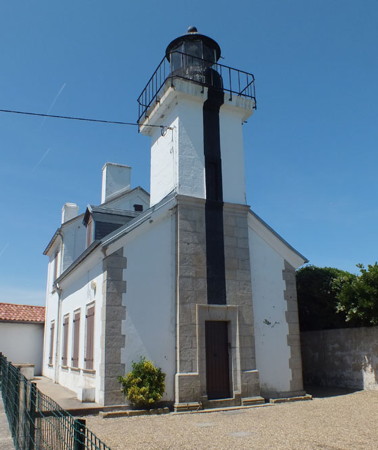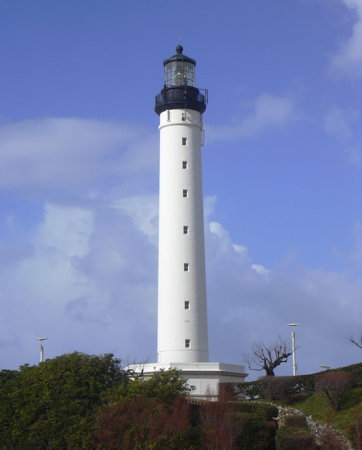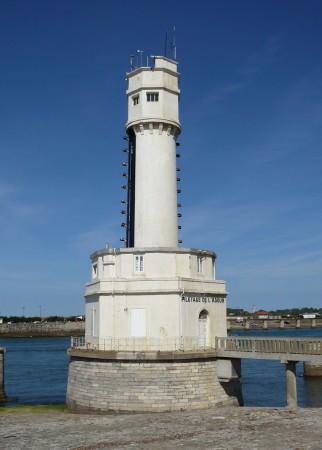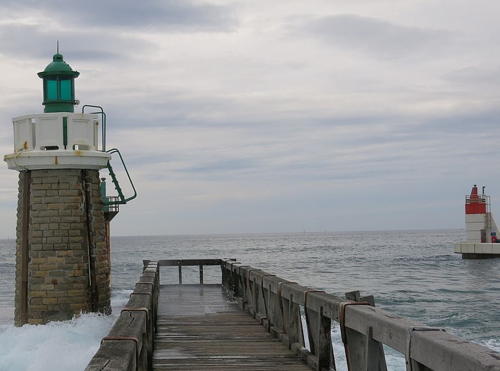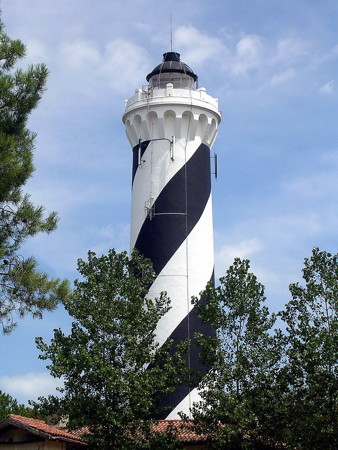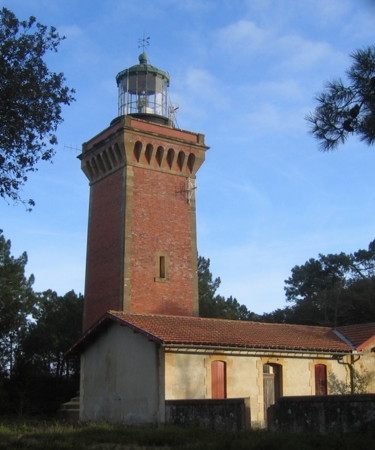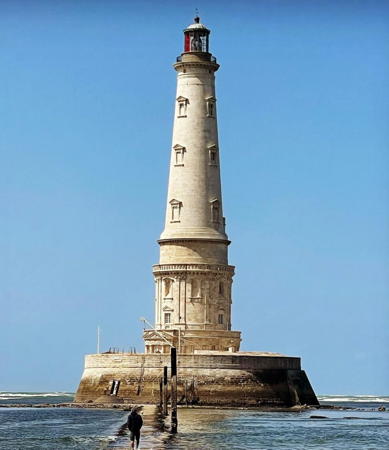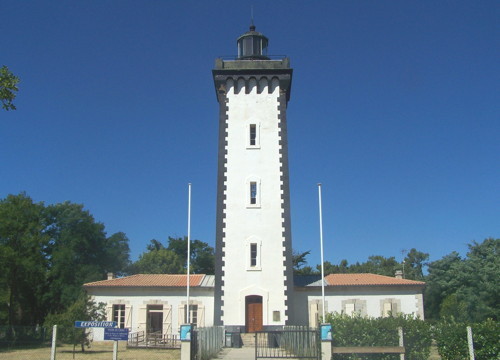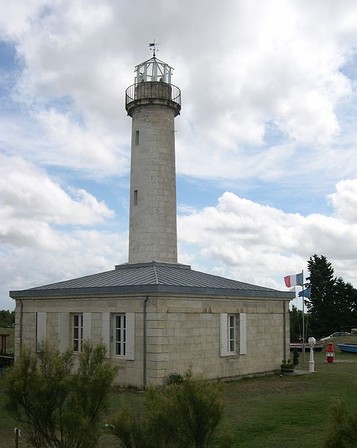France (officially the French Republic, République française) has coasts facing south on the Mediterranean Sea, west on the open Atlantic Ocean, and north on the English Channel (La Manche in French). Long a leader in lighthouse design, France has scores of famous and historic lighthouses. And it was a French engineer and physicist, Augustin-Jean Fresnel (1788-1837), who invented the powerful and beautiful lenses used in lighthouses around the world.
For local government mainland France is divided into 94 departments (départements), which are grouped for administrative purposes into 12 regions (régions). This page lists lighthouses of the former region of Aquitaine, located on the southwestern coast of France and including the three coastal départements of Pyrénées-Atlantiques, Landes, and Gironde. In 2016 the former regions of Aquitaine, Limousin, and Poitou-Charentes were merged to form the region of Nouvelle-Aquitaine (New Aquitaine).
Aquitaine faces west on the Atlantic, or more specifically the broad bight of the Atlantic known as the Bay of Biscay in English and the Golfe de Gascogne (Gulf of Gascony) in French. The northern end of Aquitaine borders the Gironde estuary, a major shipping route leading to the port of Bordeaux. South of the Gironde the French coast is mostly low, straight, and sandy, so the lighthouses tend to be tall but widely separated. The famous resort of Biarritz is at the southern end of the region, near the Spanish border. The Atlantic coastline of Aquitaine is often called the Côte d'Argent (Silver Coast).
The French word for a lighthouse, phare, is often reserved for the larger coastal lighthouses; a smaller light or harbor light is called a feu (literally "fire," but here meaning "light") or a balise (beacon). The front light of a range (alignement) is the feu antérieur and the rear light is the feu postérieur. In French île is an island, cap is a cape, pointe is a promontory or point of land, roche is a rock, récife is a reef, baie is a bay, estuaire is an estuary or inlet, détroit is a strait, rivière is a river, and havre is a harbor.
Aids to navigation in France are maintained by the Bureau des Phares et Balises, an agency of the Direction des Affaires Maritimes (Directorate of Maritime Affairs). The Directorate has four regional offices (called Directions Interrégionale de la Mer, or DIRM) at Le Havre, Nantes, Bordeaux, and Marseille. Aquitaine lighthouses fall under the Bordeaux office, DIRM Sud-Atlantique.
ARLHS numbers are from the ARLHS World List of Lights. Admiralty numbers are from volume D of the Admiralty List of Lights & Fog Signals. U.S. NGA List numbers are from Publication 113.
- General Sources
- Les Sentinelles des Mers - France Atlantique
- Photos and information posted by Guy Detienne.
- Le Phare à travers le Monde
- A large, well known site maintained by Alain Guyomard and Robert Carceller.
- Phares de France
- Another large and well known site, this one by Jean-Christophe Fichou.
- Online List of Lights - France - Atlantic Coast
- Photos by various photographers posted by Alexander Trabas. Many of the photos of Aquitaine lighthouses are by Arno Siering, Eckhard Meyer, or Capt. Peter Mosselberger ("Capt. Peter").
- Phareland, le Site des Phares de France
- This comprehensive site has good photos and information about the major lighthouses.
- Leuchttürme in Frankreich
- Photos by Andreas Köhler.
- France Lighthouses
- Aerial photos posted by Marinas.com.
- Lighthouses in Nouvelle-Aquitaine
- Photos by various photographers available from Wikimedia.
- World of Lighthouses - North and West Coasts of France
- Photos by various photographers available from Lightphotos.net.
- Société Nationale pour le Patrimoine des Phares et Balises (SNPB)
- The French national lighthouse preservation organization.
- Phares d'Aquitaine
- Historic postcard views posted by Michel Forand.
- Französische Leuchttürme
- Historic photos and postcard images posted by Klaus Huelse.
- GPSNauticalCharts
- Navigational chart for Aquitaine.
- Navionics Charts
- Navigational chart for Aquitaine.
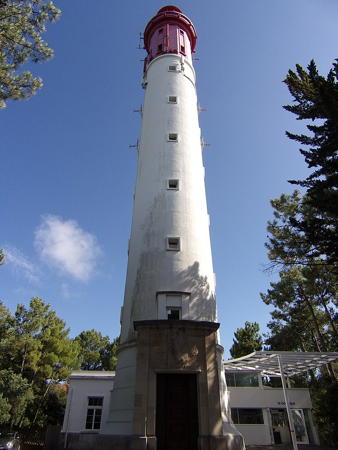
Cap Ferret Light, Cap-Ferret, July 2018
Wikimedia Creative Commons photo by
Jacquym
